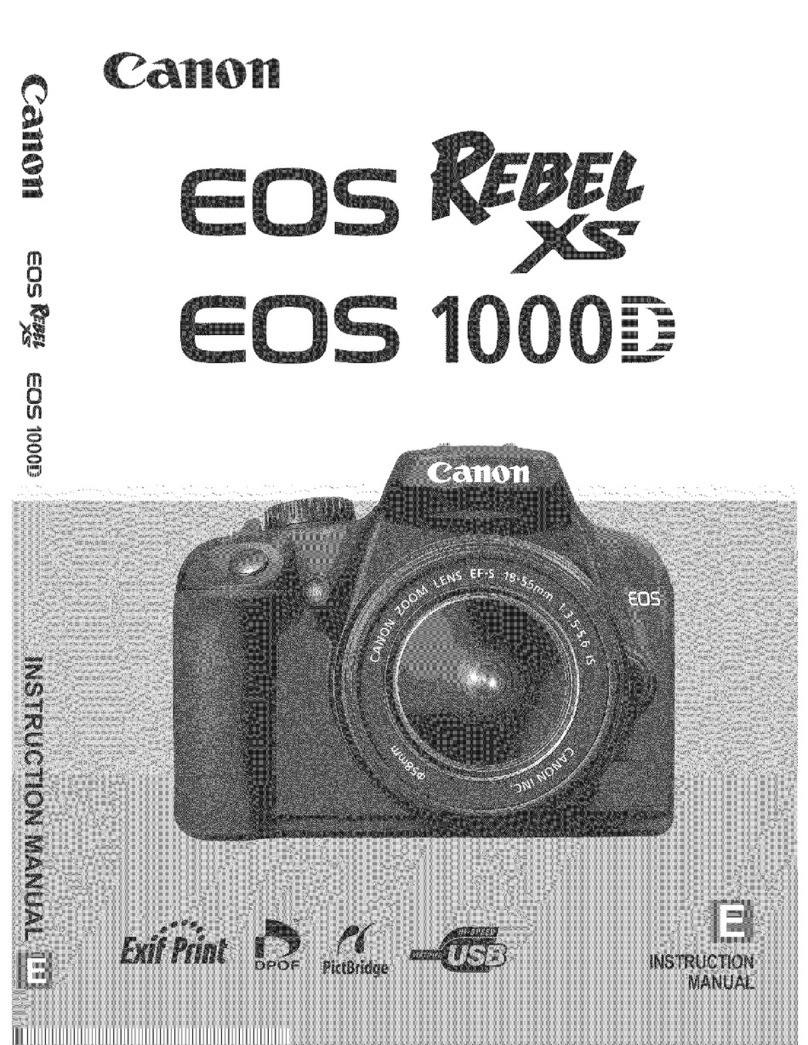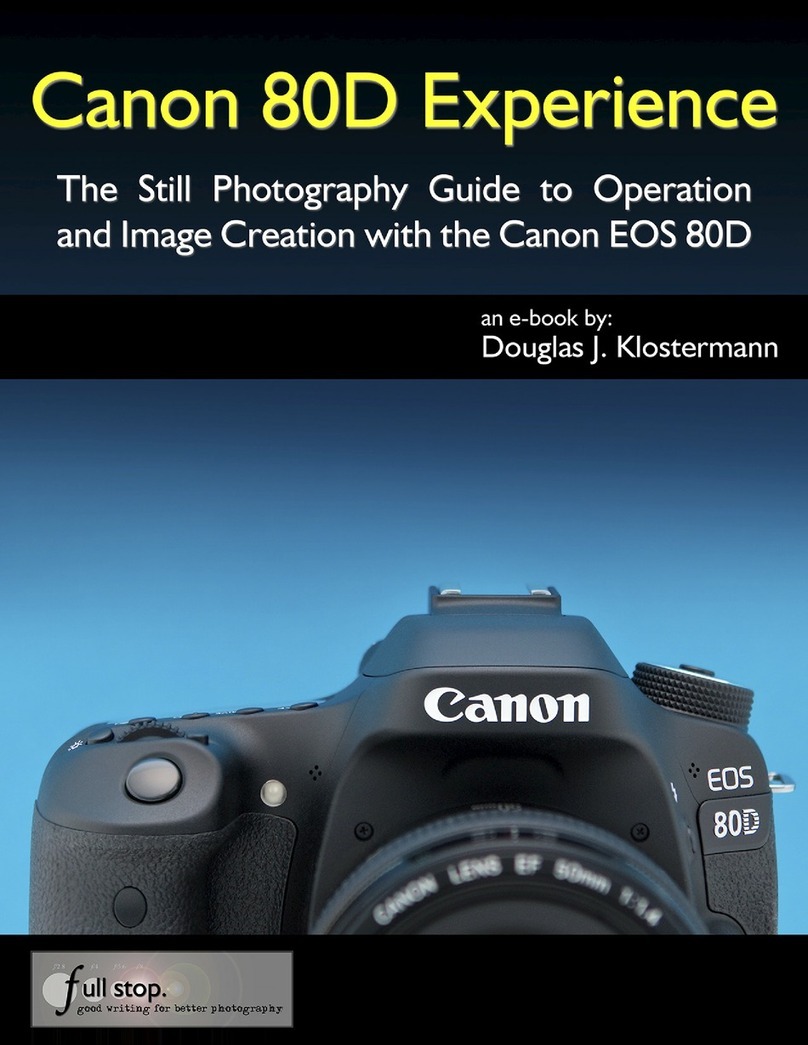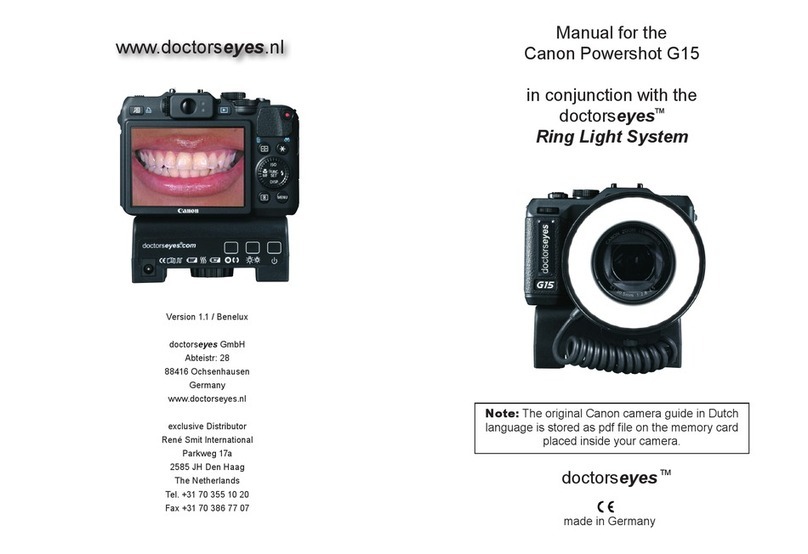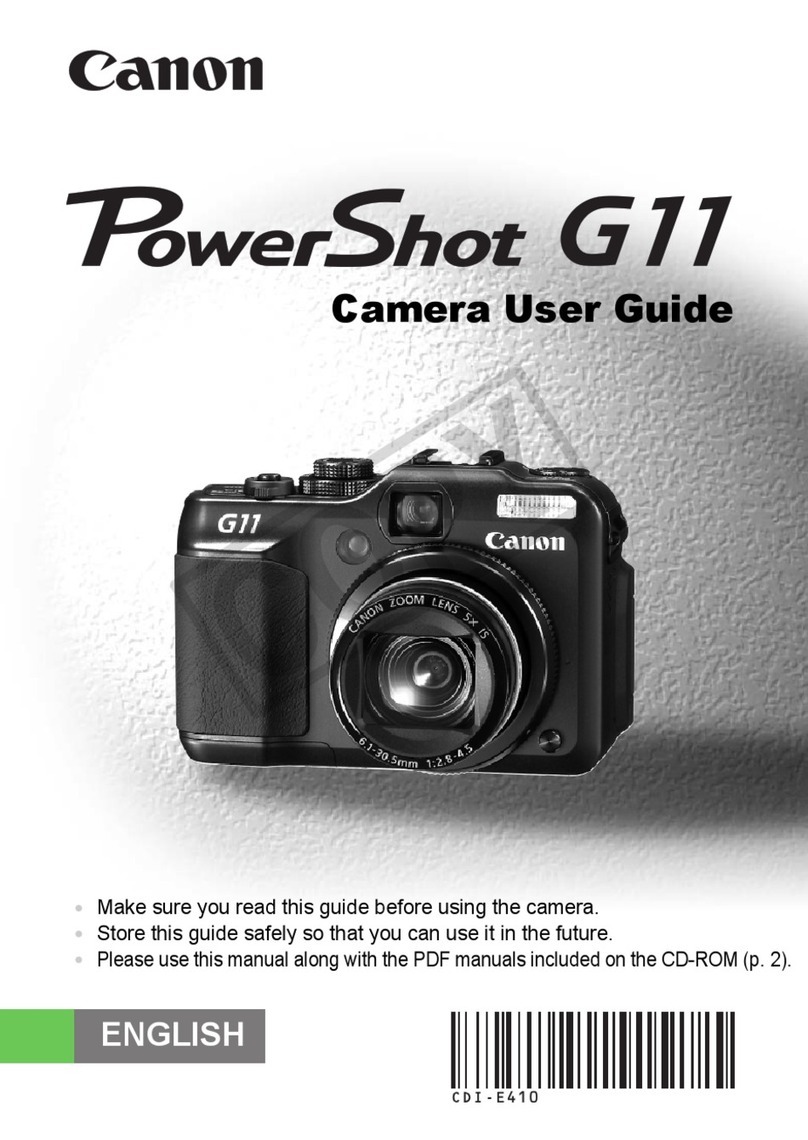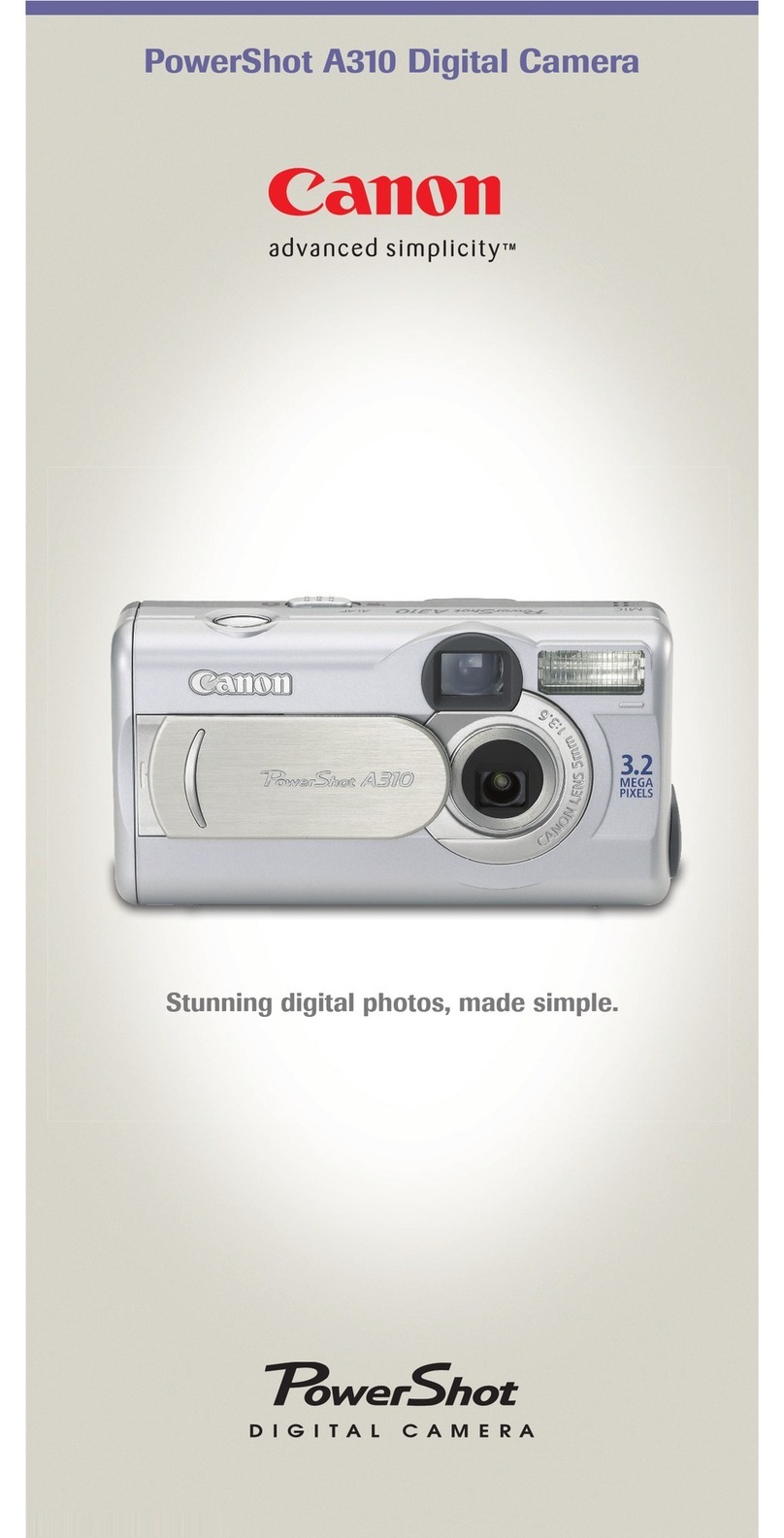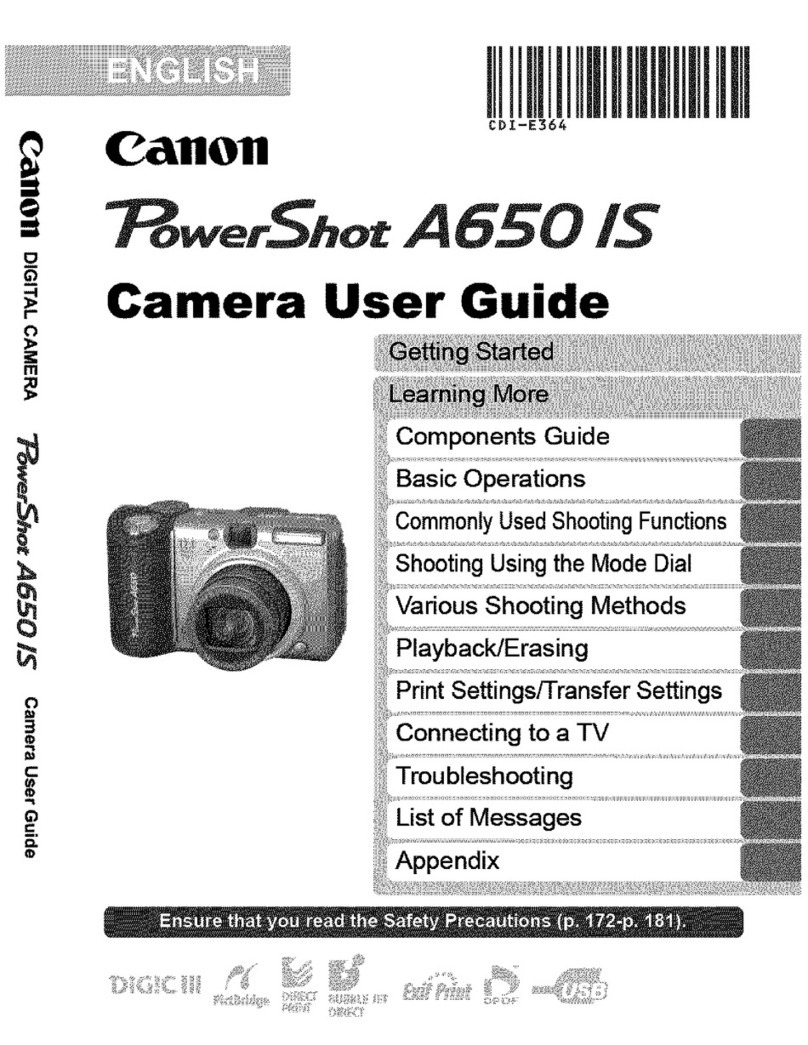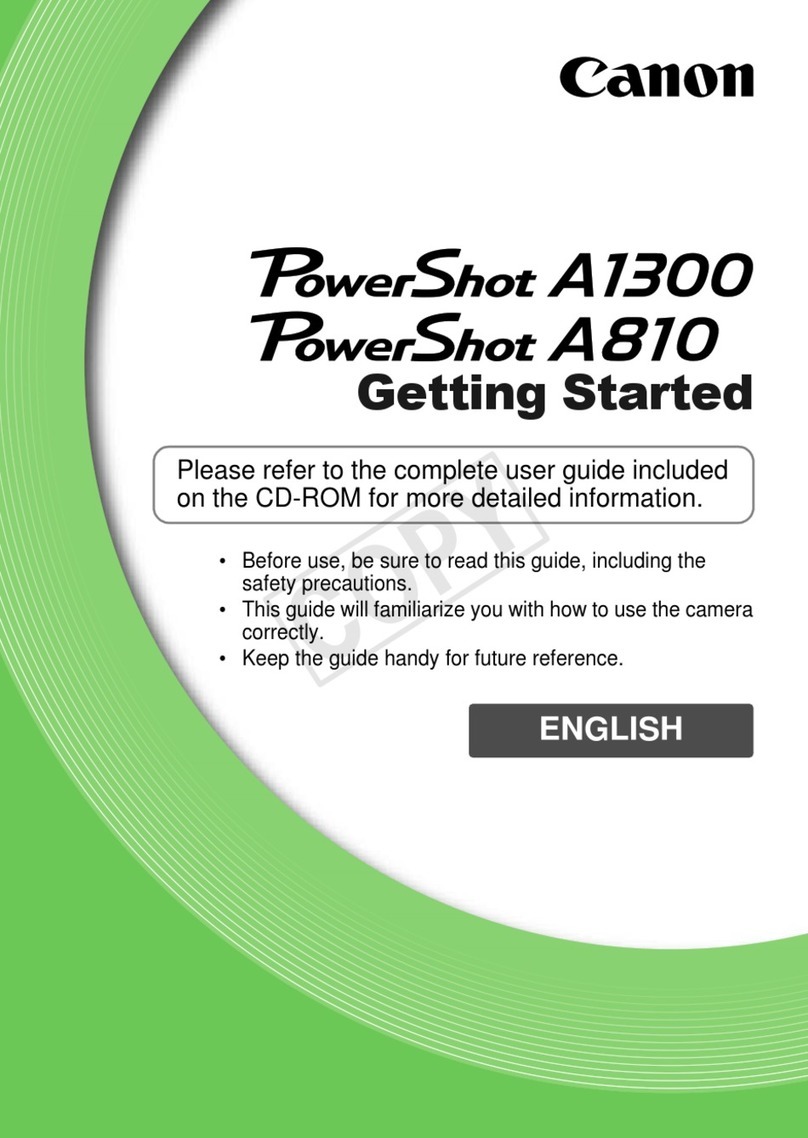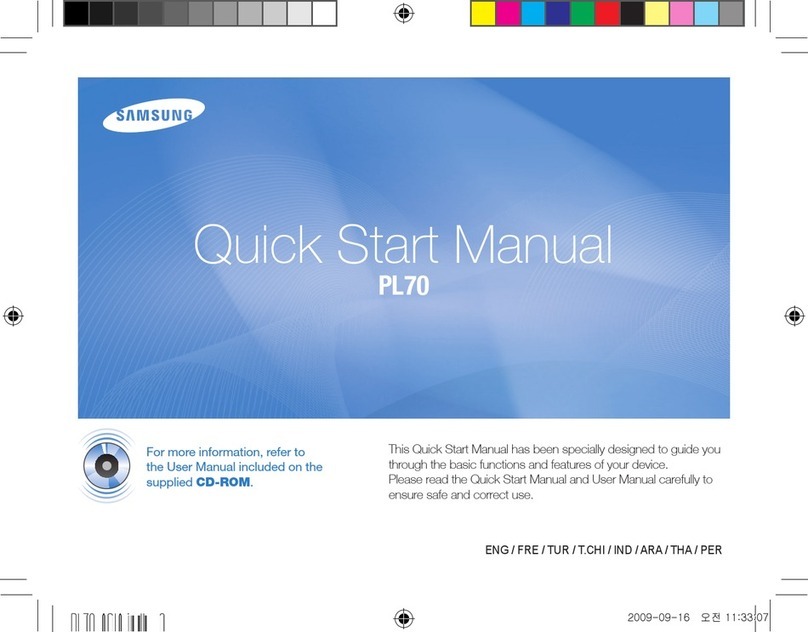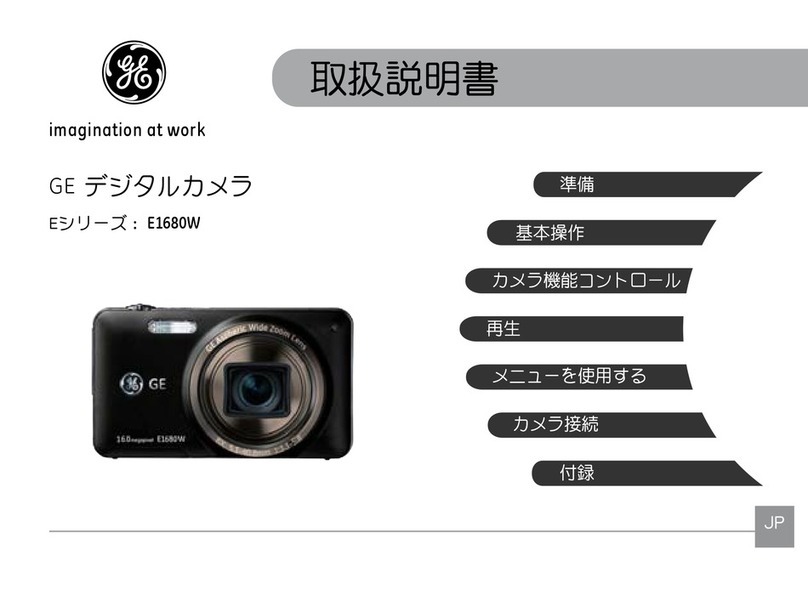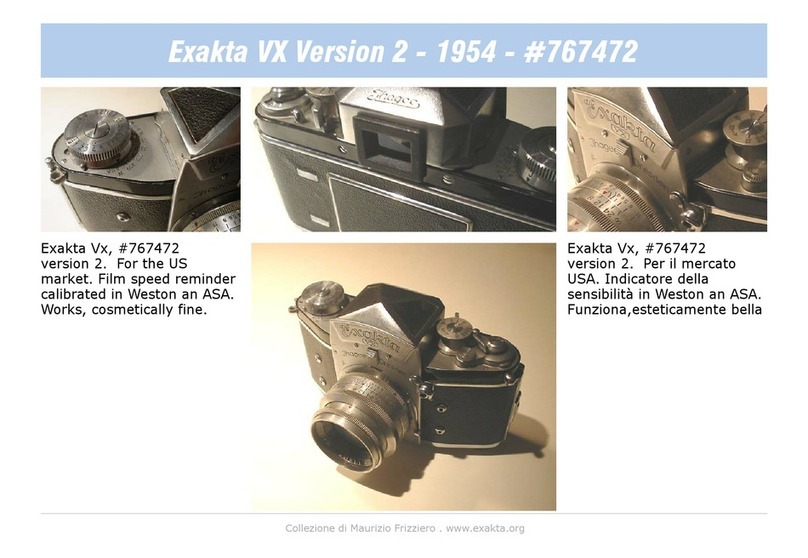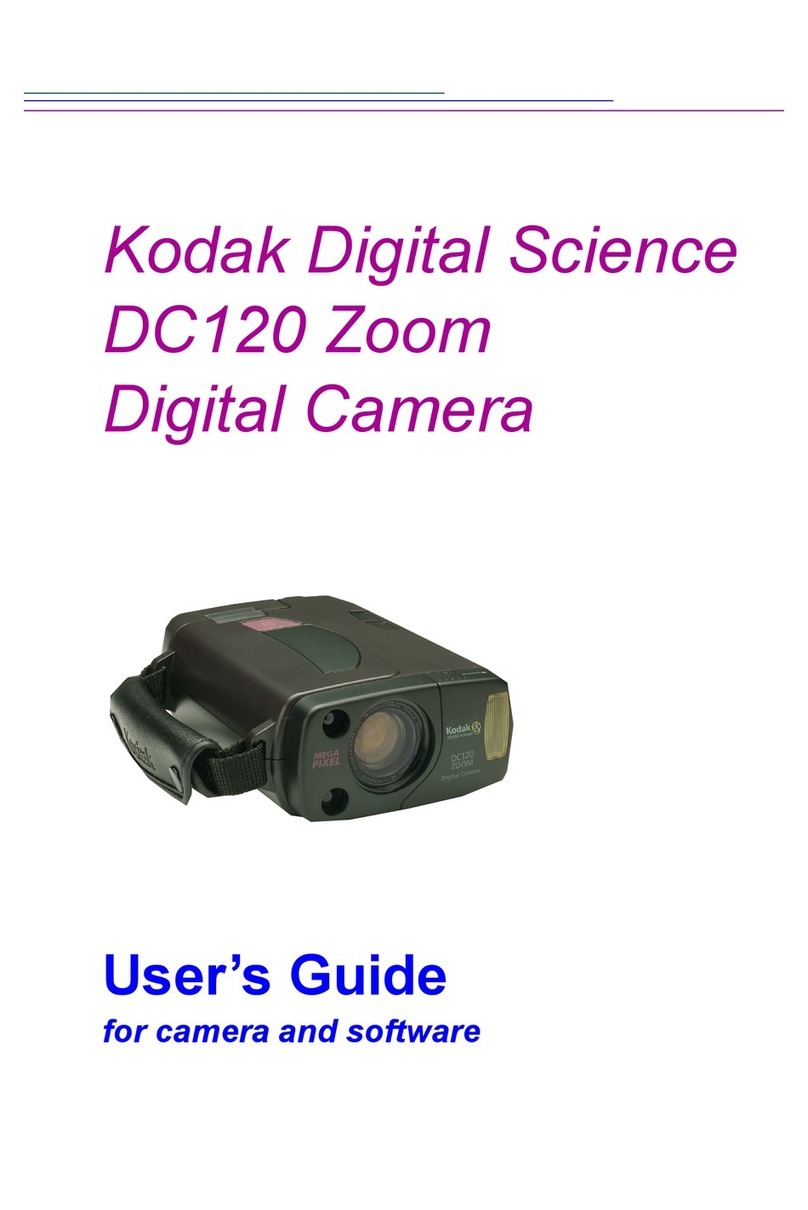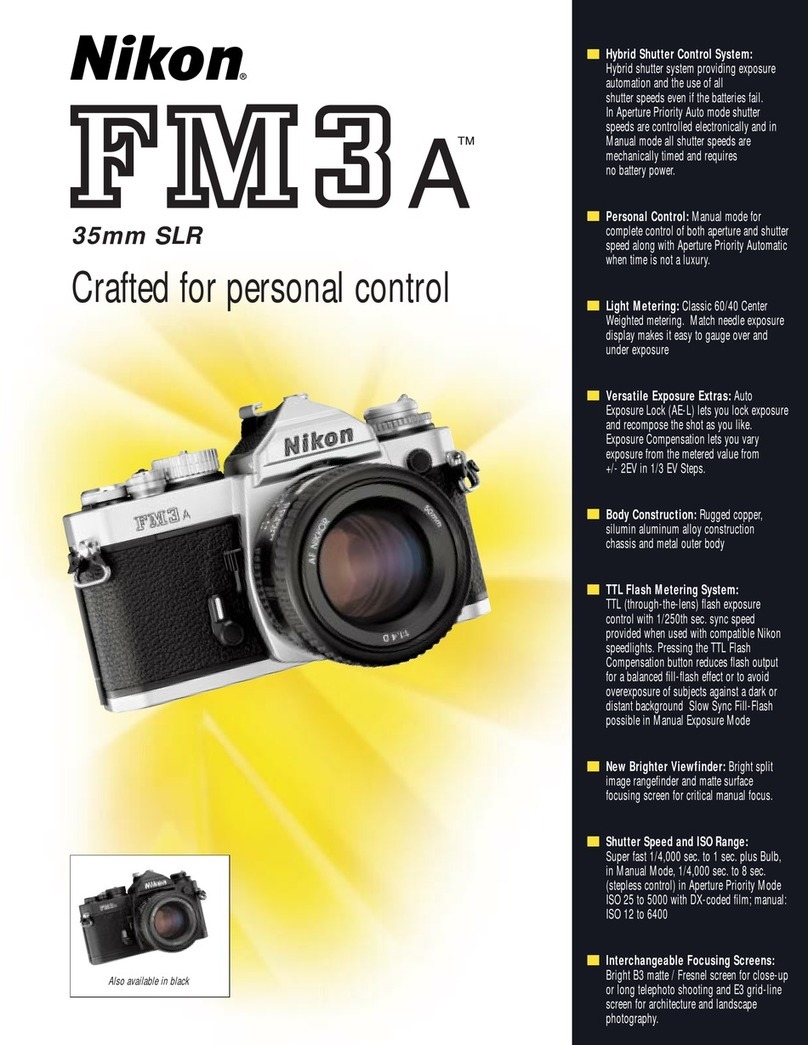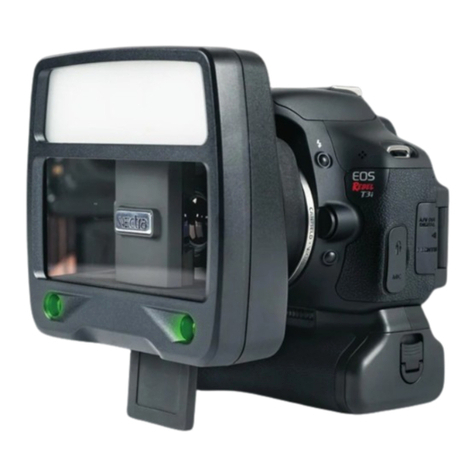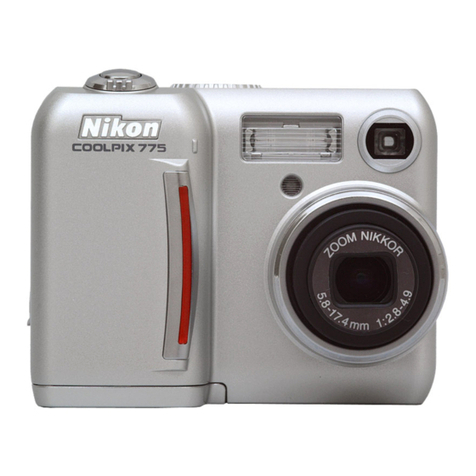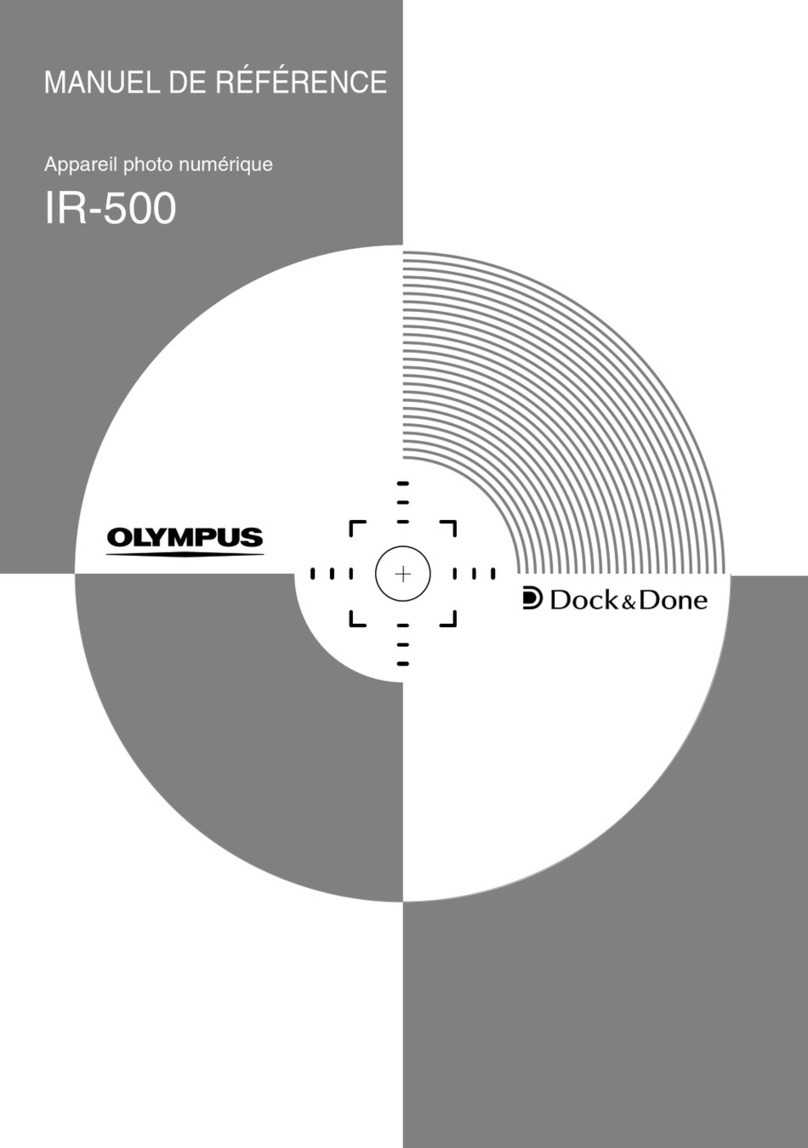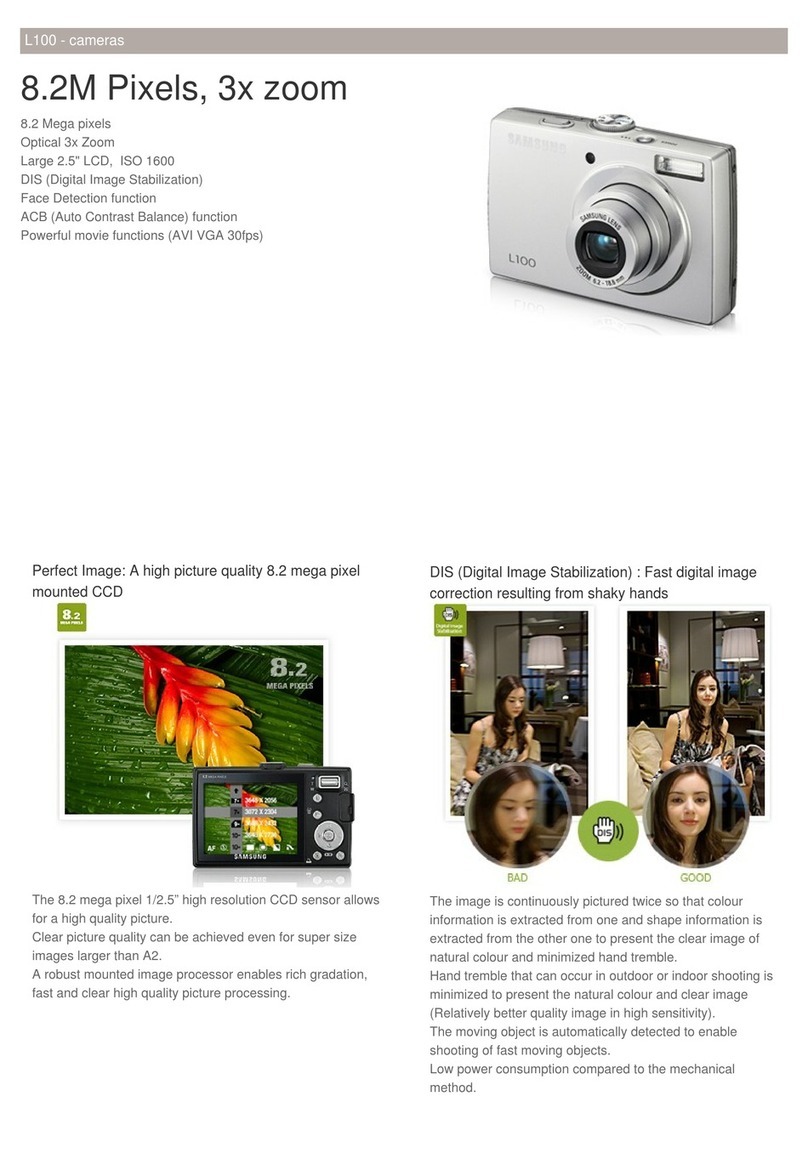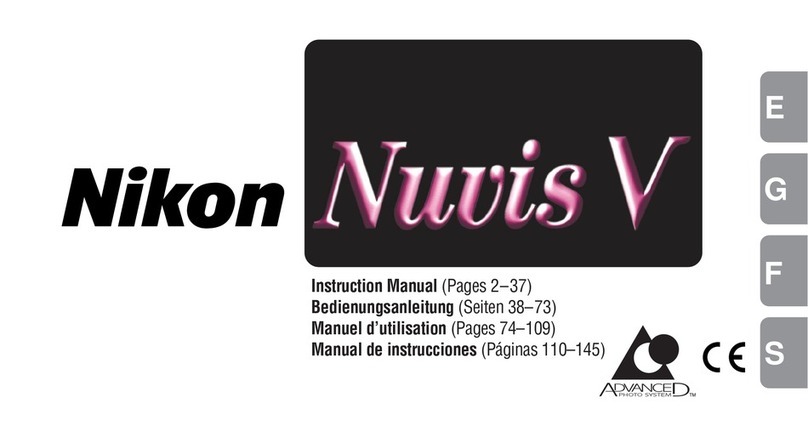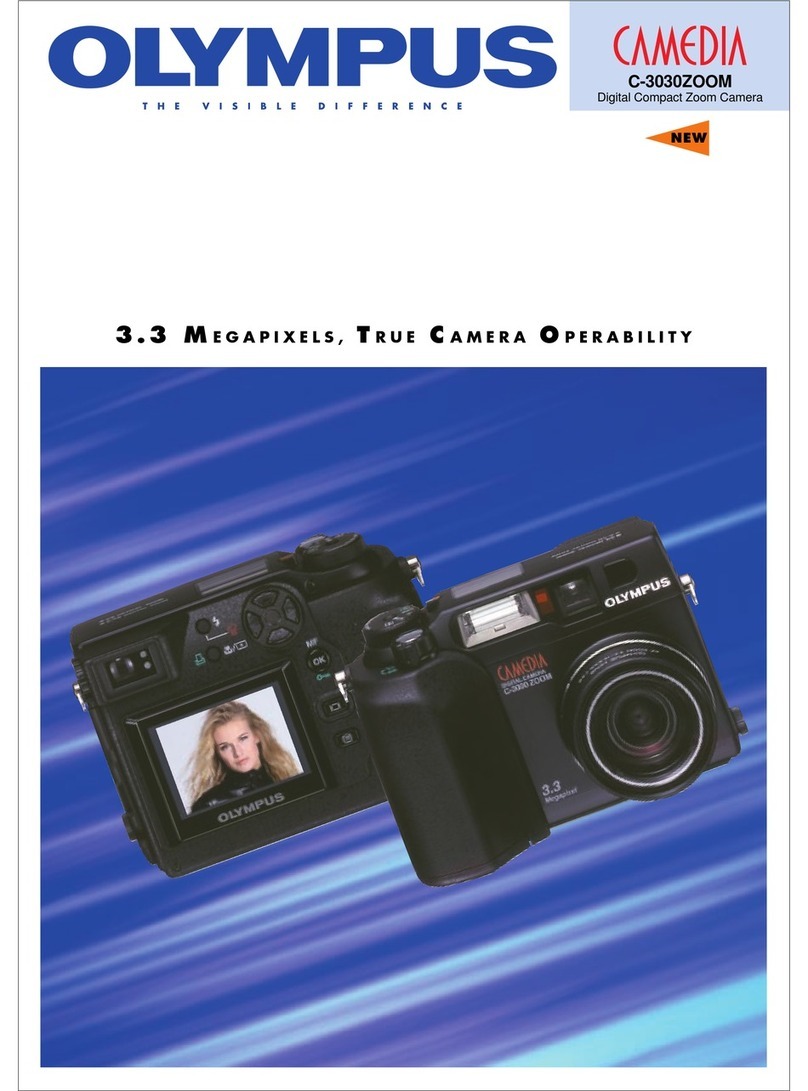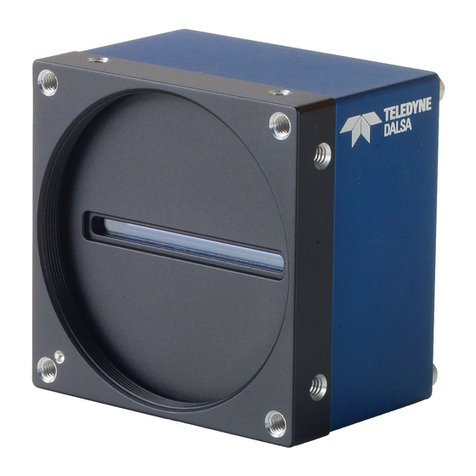Viewfinder
No matter the camera’s specifica-
tions, aclear, bright viewfinder is
the photographer’s first tool for great images.
Canon innovates with their viewfinders, espe-
cially with the viewfinders in the EOS-1D Mark IV,
EOS-1Ds Mark III and EOS 7D, by offering
approx. 100% viewfinder coverage, and several
EOS SLRs have alarger pentaprism for higher
viewfinder magnification. These cameras offer
the best view of any EOS digital camera to date.
All EOS digital SLR cameras offer dioptric correction
and several EOS SLRs have anumber of
different viewfinder accessories, including up
to 11 different focus screens available for most
any application.
Intelligent Viewfinder
The Intelligent Viewfinder, found on
the EOS 7D, is a transparent LCD in
the viewfinder that superimposes a variety of
shooting information at the push of a button.
Whereas with other EOS cameras’ viewfinders
the representation of AF points and metering
areas are static, with the EOS 7D’s Intelligent
Viewfinder, they can be displayed, adjusted, or
hidden, in camera, with ease. This means less
distraction and more clarity to view the image in
its entirety. The Intelligent Viewfinder includes a
Grid Display and in Spot metering mode, the
specific area metered is shown.
Superlative Exposure Control
Canon EOS DSLRs incorporate
advanced exposure control systems,
offering the photographer exceptionally
precise AE (auto exposure) with awide range of
metering options. Full-frame Evaluative metering
incorporates the camera’s multi-zone sensor
reading with specific focusing point data. The
onboard microcomputer compares input from
all zones and calculates optimum exposure.
While Evaluative metering helps to assure excel-
lent results in even the most challenging light-
ing situations, advanced photographers can
choose from among several additional metering
options. Center-Weighted metering is available
for those who prefer a more traditional pattern.
Partial metering limits readings to sensor zones
in the center of the image area, giving the pho-
tographer more area-specific control. Spot
readings can be taken at the center of the frame
area or, with some models, linked to an AF
point. With certain EOS cameras, up to eight
separate Spot meter readings can be recorded
and averaged. For cameras like the EOS 60D,
Canon developed the iFCL (intelligent Focus
Color Luminance) 63-zone Dual-layer metering
system to incorporate the color wavelength
surrounding the chosen focus point to help
ensure more natural color rendition. Flash pho-
tography with EOS Systems also benefits from
the extraordinary exposure control technology
Canon has created. E-TTL (Evaluative Through-
The-Lens) and E-TTL II autoflash systems work
in combination with the camera’s multi-zone
metering sensor to help take the guesswork out
of flash photography. The camera performs
instantaneous calculations based on readings
from the preflash, ambient lighting conditions
and assessment of subject location to deter-
mine the optimum flash output and exposure
settings. With E-TTL II, the calculations also
incorporate distance information from compati-
ble EF lenses, enabling the system to better
handle dark, light and highly reflective subjects.
Resulting images can have avirtually perfect
balance between ambient light and flash
illumination, even in complicated lighting
situations and compositions.
11
10
Spot metering display – Focus with a central,
circular zone for accurate exposure control.
AF point automatic selection – The camera auto-
matically chooses the correct AF point.
Zone AF – The AF points are divided into five
focusing zones, useful for off-center shots.
AF point expansion – Focus with a selected AF point
and points surrounding it. Great for moving subjects.
Hide all – An unobstructed view lets you get
close to your subject and capture detail.
Grid display – Useful for scenes where horizontal
or vertical lines are stressed, such as architecture.
Spot AF – Focuses on an even smaller area for
precise focus on small subjects.
AI Servo AF tracking display – Provides instant
feedback of AF points tracking a moving subject.
Intelligent Viewfinder – Change your viewfinder display to match any situation. Live View Function
Canon’s spectacular Live View
shooting is now available through most of the
EOS digital models. Live View Function, where
the photographer can compose and shoot directly
from the camera’s LCD is an indispensable feature
for creative photography in any number of situa-
tions. It enables the photographer to zoom in and
navigate the composition 5x or 10x normal size,
while enabling critical focus and allowing more
attention to detail. Users can even choose a grid
overlay, perfect for architectural photography.
In the studio, Live View Function can be used
remotely (via a computer) through the camera’s
USB connection, or wirelessly if the optional
Wireless File Transmitter is used.
Live View Focusing
Canon’s Live View Function includes 3focusing
modes: Quick mode, Live mode, and Face Detection
Live mode. In Quick mode, One-Shot AF is set
automatically and the AF point is selectable even
while the Live View image is displayed. In Live
mode, AF can be started by pressing the AE button
for either AF mode. In Face Detection Live mode,
the largest face near center is detected initially,
but the Multi-controller can be used to select
any face detected.
Superb Ergonomics and Custom
Functions
Refined ergonomics and smooth operability are
Canon EOS traditions, and even with the
unavoidable complexities involved with digital
capture, Canon’s EOS interface design puts the
most frequently used controls where they make
the most sense —in the hands of the photographer.
Operation is enhanced by Custom Functions, a
concept pioneered by Canon. Custom Functions
enable photographers to tailor features and
operating functions to suit their own shooting
style, or to optimize camera performance for
specific subjects or shooting conditions. Whether
customizing a shutter speed range or specifying
the parameters of bracketing, photographers lit-
erally have hundreds of choices in how they
want their EOS digital SLR to operate with ease.
With the EOS 60D, the Multi-control Dial, featur-
ing adedicated and easily-accessible Quick
Control button for quick access to the Quick Control
screen at any time, enables users to operate
menus and enter settings with a simple touch.
With its in-house capabilities, Canon is able to
rapidly develop and manufacture proprietary
ASICs (Application-Specific Integrated Circuits),
eliminating dependence on common “off-the-
shelf” components, and enabling the fast
deployment of new, innovative solutions in
digital camera design. Canon EOS DSLR cameras
thus incorporate advanced sensors, processors
and other key components. Combined with
standout electromechanical and optical design
know-how, Canon digital technologies make
EOS simply one of the most powerful DSLR
systems anyone can own.
Dual Axis Electronic Level Sensor
Among the newest and most useful features
developed by Canon for the EOS 7D, the bril-
liant Dual Axis Electronic Level display aids in
achieving perfectly oriented shots. Visible in
the viewfinder and on the camera’s LCD, in
both Live View mode or as a standalone, and
capable of displaying both roll and pitch in 1°
increments, the Dual Axis Electronic Level
Sensor is invaluable for architecture, macro
photography, video, or any situation where
critical composition is important.
63-zone Metering System — Canon’s sophisticated 63-zone
Evaluative metering system considers not only the active
focusing point, but also a range of metered values from adjacent
areas to determine correct exposure even in difficult lighting.
EOS SLR CAMERAS
Viewfinder display with Intelligent Viewfinder.
View of rear LCD monitor with Live View.
10x magnified view.
Live View Function – With Live View Function, images can be
composed and captured from the camera’s LCD monitor.
Multi-control Dial on EOS 60D

